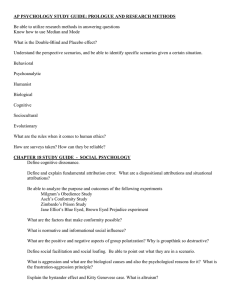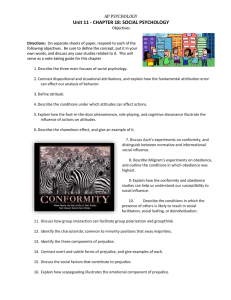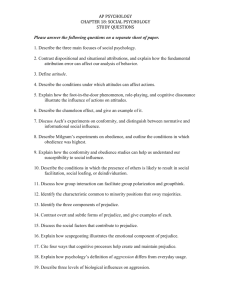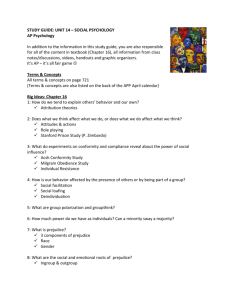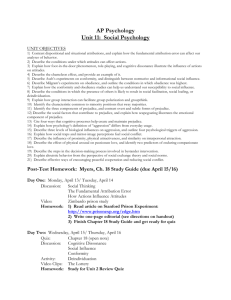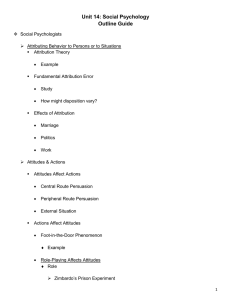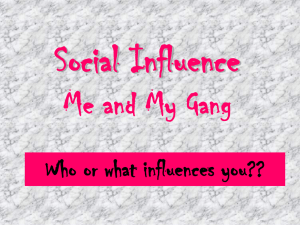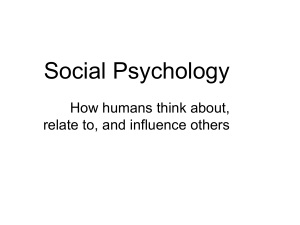File
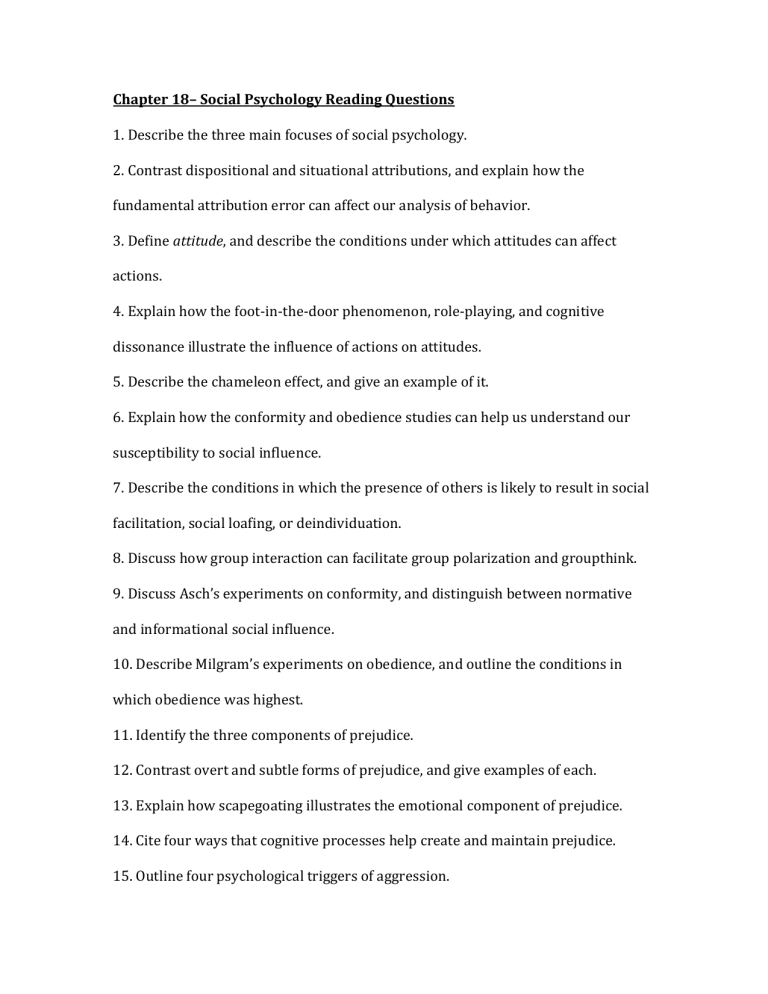
Chapter 18– Social Psychology Reading Questions
1. Describe the three main focuses of social psychology.
2. Contrast dispositional and situational attributions, and explain how the fundamental attribution error can affect our analysis of behavior.
3. Define attitude, and describe the conditions under which attitudes can affect actions.
4. Explain how the foot-in-the-door phenomenon, role-playing, and cognitive dissonance illustrate the influence of actions on attitudes.
5. Describe the chameleon effect, and give an example of it.
6. Explain how the conformity and obedience studies can help us understand our susceptibility to social influence.
7. Describe the conditions in which the presence of others is likely to result in social facilitation, social loafing, or deindividuation.
8. Discuss how group interaction can facilitate group polarization and groupthink.
9. Discuss Asch’s experiments on conformity, and distinguish between normative and informational social influence.
10. Describe Milgram’s experiments on obedience, and outline the conditions in which obedience was highest.
11. Identify the three components of prejudice.
12. Contrast overt and subtle forms of prejudice, and give examples of each.
13. Explain how scapegoating illustrates the emotional component of prejudice.
14. Cite four ways that cognitive processes help create and maintain prejudice.
15. Outline four psychological triggers of aggression.
16. Explain how social traps and mirror-image perceptions fuel social conflict.
17. Describe the influence of proximity, physical attractiveness, and similarity on interpersonal attraction.
18. Define altruism, and give an example.

